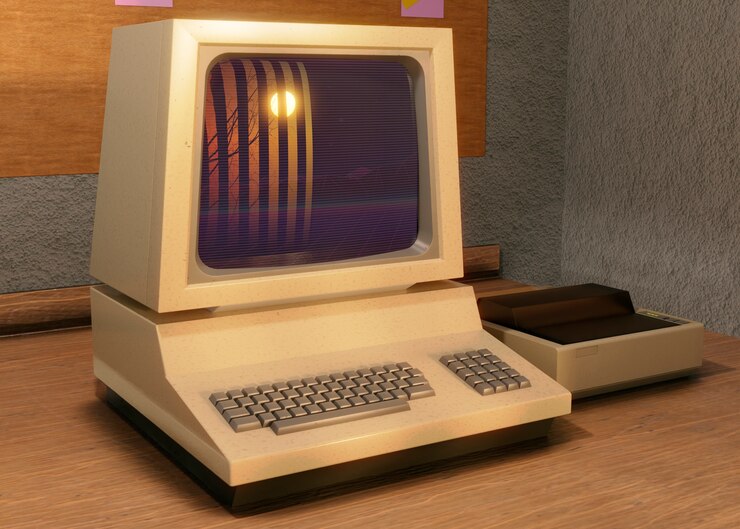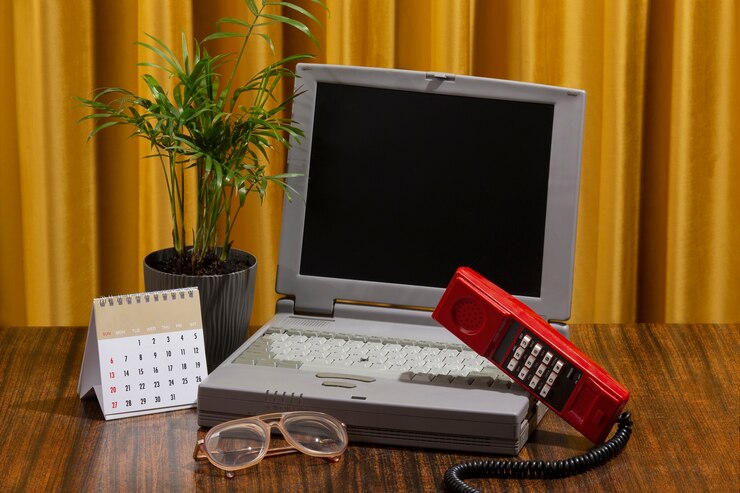The first PC in America was the Altair 8800, released in 1975. It marked the beginning of the microcomputer era in the country.
The Altair 8800, developed by MITS, kick-started the personal computer revolution in the United States, empowering individuals with computing capabilities previously limited to large corporations and research institutions. This pivotal moment paved the way for the proliferation of PCs in homes, businesses, and educational institutions, revolutionizing the way people work, communicate, and access information.
The introduction of the Altair 8800 sparked a wave of innovation, leading to the development of modern-day computers and transforming America’s technological landscape. As the first PC in America, the Altair 8800 holds a significant place in the history of computing, shaping the digital age we live in today.

Early Innovations In Computing
The first personal computer (PC) in America marked a significant milestone in the evolution of computing machines. The journey leading to the creation of the first PC was paved with several early innovations in computing that laid the groundwork for the development of personal computing as we know it today.
Evolution Of Computing Machines
Before the arrival of the first PC, there were noteworthy advancements and developments in computing machines that sparked the evolution towards personal computing. These innovations in computing can be traced back to the early stages of computation, where the groundwork for modern computers was being established through a series of technological breakthroughs.
Emergence Of Personal Computers In America
The emergence of personal computers in America marked a significant turning point in the history of technology. The inception of personal computers brought about a revolutionary transformation in the way people worked, communicated, and lived. This article delves into the fascinating journey of the first PC in America, shedding light on the key players and innovations that shaped the landscape of computing.
The Inception Of Personal Computers
Back in the 1970s, the vision of a personal computer – a device that could be owned and operated by individuals – started to take shape. It was during this era that pioneering companies and individuals began to explore the development of compact, user-friendly computing machines. The emergence of personal computers in America was fueled by the desire to make computing accessible to the masses.
Key Players And Innovations
Several key players played a pivotal role in ushering in the era of personal computers in America. Visionaries such as Steve Jobs and Steve Wozniak co-founded Apple Inc., and released the groundbreaking Apple II in 1977, marking a significant milestone in the history of personal computing. Additionally, companies like IBM and Commodore made substantial contributions to the development and popularization of personal computers through their innovative products and marketing strategies.
Impact And Legacy
The impact and legacy of the first PC in America can be seen in the profound influence it had on American society and its lasting historical significance.
Influence On American Society
The introduction of the first PC in America revolutionized the way people interacted with technology. With its compact size and user-friendly interface, it empowered individuals to perform tasks and access information from the comfort of their homes. This led to a significant shift in the workforce, as more people began to work remotely, thereby transforming traditional employment structures. The accessibility and convenience of the first PC also played a crucial role in shaping the educational landscape, allowing students and scholars to conduct research and engage in digital learning.
Legacy And Historical Significance
The legacy of the first PC in America is deeply rooted in its historical significance, as it marked the beginning of a technological revolution that continues to shape modern society. Its impact on industries such as finance, healthcare, and communication is undeniable, paving the way for innovation and efficiency. Additionally, the first PC’s historical significance is reflected in the evolution of consumer electronics, as it set the stage for subsequent advancements in computing technology, ultimately leading to the digitization of numerous aspects of daily life.
Technological Advancements
Technological advancements have significantly shaped the history of personal computing in America. From pioneering technological features to iterative improvements and innovations, the evolution of the first PC in America mirrors the rapid progress and innovation within the tech industry during the 20th century.
Pioneering Technological Features
The first PC in America introduced pioneering technological features that revolutionized the computing landscape. It featured innovative microprocessor technology, which paved the way for compact and efficient computing machines. Additionally, advancements in integrated circuit technology enabled the integration of multiple functions into a single chip, contributing to the compact design and enhanced capabilities of early PCs.
Iterative Improvements And Innovations
As the first PC in America gained traction, iterative improvements and innovations propelled the evolution of computing technology. The integration of graphical user interfaces (GUI) marked a significant breakthrough that enhanced user interaction and experience. Moreover, the development of operating systems such as MS-DOS facilitated a more user-friendly and intuitive computing environment, laying the foundation for future PC advancements.
The First Pc In America
In the realm of technological innovation, tracing the roots of the personal computer reveals an intriguing narrative that begins in the early 1970s. The first personal computer in America marked a pivotal moment in history, shaping the way we live, work, and interact with technology to this day. An exploration of the historical context and significance of this groundbreaking invention unveils a fascinating journey of technological evolution.
An In-depth Look At The First American Pc
Before delving into the intricacies of the first American PC, it is essential to comprehend the historical significance it holds. From hardware specifications to its impact on society, a comprehensive analysis sheds light on the pioneering nature of this technological milestone.
Historical Context And Significance
During the mid-20th century, the concept of a personal computer was regarded as a far-fetched notion. The emergence of the first American PC not only revolutionized the computing landscape but also catalyzed the democratization of technology. Its significance transcends mere hardware specifications, serving as a symbol of relentless human ingenuity and the power of innovation.
Frequently Asked Questions For What Was The First Pc In America?
What Was The First Pc Invented In America?
The first PC invented in America was the Kenbak-1, created in 1971 by John Blankenbaker. It was a simple 8-bit computer designed for hobbyists and education purposes.
Why Was The Kenbak-1 Considered The First Personal Computer?
The Kenbak-1 was considered the first personal computer because it was the first commercially available personal computer designed for individual use, complete with keyboard and monitor.
What Were The Specifications Of The Kenbak-1?
The Kenbak-1 had 256 bytes of memory, featured a 1 MHz clock speed, and did not have any hardware support for interrupts or a stack. It used toggle switches for programming and input, making it quite basic by today’s standards.
How Did The Kenbak-1 Impact The Development Of Personal Computers?
The Kenbak-1 was a crucial step in the development of personal computers, as it inspired later designs and paved the way for the technological advancements that followed in the personal computing industry.
Conclusion
The first PC in America revolutionized technology and changed the course of history. Its impact has been significant and paved the way for innovations that continue to shape our lives today. Understanding the origins of the first PC provides valuable insight into our digital world and its evolution.
This groundbreaking advancement marked the beginning of a new era in computing, setting the stage for the transformative developments we have witnessed in the realm of technology.

